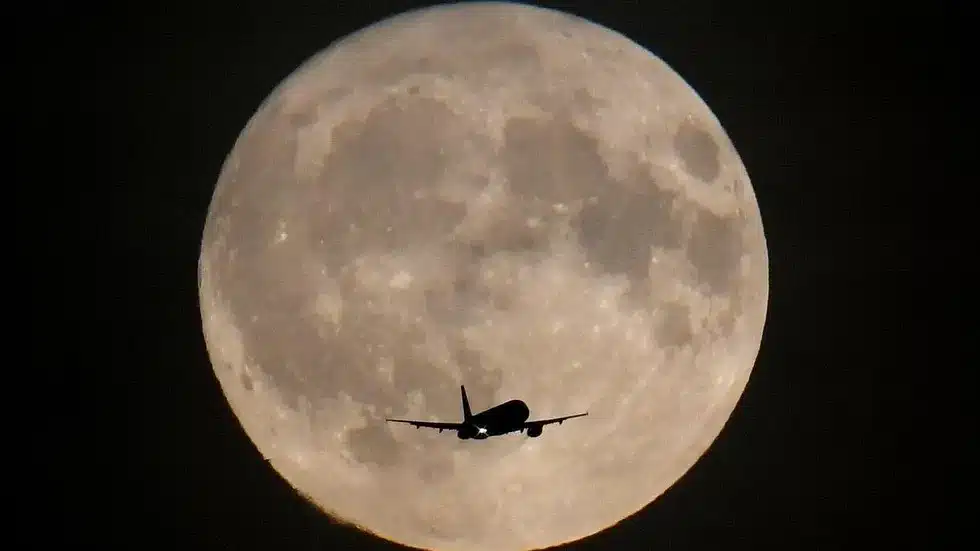About Coordinated Lunar Time (LTC)
- It will provide a time-keeping benchmark for lunar spacecraft and satellites that require extreme precision for their missions.
- It will also synchronise the communication between satellites, astronauts, bases and the Earth.
- A unified time standard would be essential for coordinating operations, ensuring the reliability of transactions and managing the logistics of lunar commerce.
- Why there is need of LTC?
- As there is less gravity on the Moon, time ticks slightly faster there relative to the time on the Earth.
- In other words, for someone on the Moon, an Earth-based clock will appear to lose on average 58.7 microseconds per Earth day with “additional periodic variations.
- It can create problems for situations such as a spacecraft seeking to dock on the Moon, data transferring at a specific time, communication, and navigation.
How does Earth’s time standard work?
- Most of the clocks and time zones of the world are based on Coordinated Universal Time (UTC) which is essentially an internationally agreed upon standard for world time.
- It is set by the International Bureau of Weights and Measures in Paris, France.
- It is tracked by a weighted average of more than 400 atomic clocks placed in different parts of the globe.
- Atomic clocks measure time in terms of the resonant frequencies — the natural frequency of an object where it tends to vibrate at a higher amplitude — of atoms such as cesium-133.
- In atomic time, a second is defined as the period in which a caesium atom vibrates 9,192,631,770 times. As the vibration rates at which atoms absorb energy are highly stable and ultra-accurate, atomic clocks make for an excellent device for gauging the passage of time.
- To obtain their local time, countries need to subtract or add a certain number of hours from UTC depending on how many time zones they are away from 0 degree longitude meridian, also known as the Greenwich meridian.
- If a country lies on the west of the Greenwich meridian, it has to subtract from the UTC, and if a country is located on the east of the meridian, it has to add.
Q: What Is Greenwich meridian?
It is an imaginary line, last established in 1851, that was used to indicate 0° longitude. It passes through Greenwich, a borough of London, and terminates at the North and South poles. Because it indicated 0° longitude, it was also known as the prime meridian.
Source: How and why US wants to establish a time standard for the Moon
Last updated on December, 2025
→ Check out the latest UPSC Syllabus 2026 here.
→ Join Vajiram & Ravi’s Interview Guidance Programme for expert help to crack your final UPSC stage.
→ UPSC Mains Result 2025 is now out.
→ UPSC Notification 2026 is scheduled to be released on January 14, 2026.
→ UPSC Calendar 2026 is released on 15th May, 2025.
→ The UPSC Vacancy 2025 were released 1129, out of which 979 were for UPSC CSE and remaining 150 are for UPSC IFoS.
→ UPSC Prelims 2026 will be conducted on 24th May, 2026 & UPSC Mains 2026 will be conducted on 21st August 2026.
→ The UPSC Selection Process is of 3 stages-Prelims, Mains and Interview.
→ UPSC Result 2024 is released with latest UPSC Marksheet 2024. Check Now!
→ UPSC Prelims Result 2025 is out now for the CSE held on 25 May 2025.
→ UPSC Toppers List 2024 is released now. Shakti Dubey is UPSC AIR 1 2024 Topper.
→ UPSC Prelims Question Paper 2025 and Unofficial Prelims Answer Key 2025 are available now.
→ UPSC Mains Question Paper 2025 is out for Essay, GS 1, 2, 3 & GS 4.
→ UPSC Mains Indian Language Question Paper 2025 is now out.
→ UPSC Mains Optional Question Paper 2025 is now out.
→ Also check Best IAS Coaching in Delhi

















